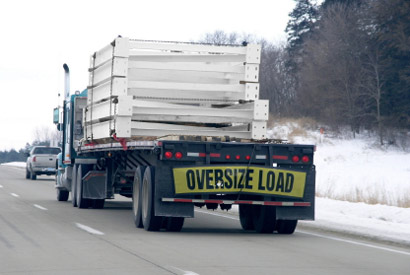Air pollution study clears the air on diesel versus gas emissions
Are gasoline-fueled cars or large diesel trucks the bigger source of secondary organic aerosol (SOA), a major component of smog? UC Berkeley researchers have stepped into this debate with a new study that says diesel exhaust contributes 15 times more than gas emissions per liter of fuel burned.
For example, the researchers noted that in the San Francisco Bay Area, about 10 times m

ore gas is used compared with diesel.
SOA contributes to respiratory problems and poor air quality, so pinpointing the major sources of the pollutant is important in evaluating current and future policies to reduce smog in the state.
The new findings contradict previous research that put the blame on gasoline-fueled vehicles as the predominant source of precursors that form secondary organic aerosol.
“We can now say that, while both motor vehicle sources are important for these ‘secondary’ particles, diesel is responsible for a larger portion, especially in regions such as the San Joaquin Valley with a lot of diesel use,” said study principal investigator and professor Allen Goldstein, who has joint appointments in the Department of Environmental Science, Policy and Management and the Department of Civil and Environmental Engineering.
For this study, Goldstein, who also is a faculty chemist at the Lawrence Berkeley National Laboratory, teamed up with Robert Harley, professor of civil and environmental engineering, and an expert on vehicle emissions and air quality.
The findings stand out because the researchers were able to tease out the chemical composition of fuel emissions.
“The data from our study contains the most comprehensive chemical detail to date on diesel and gasoline emissions,” said study lead author Drew Gentner, a recent UC Berkeley Ph.D. graduate in civil and environmental engineering. “This presents many opportunities to assess the chemistry of these compounds in the atmosphere and the impacts of these sources. We expect that these findings will help policymakers improve air pollution control measures in the state, and also other parts of the world.”
The California Air Resources Board and the U.S. Environmental Protection Agency helped support this research.
